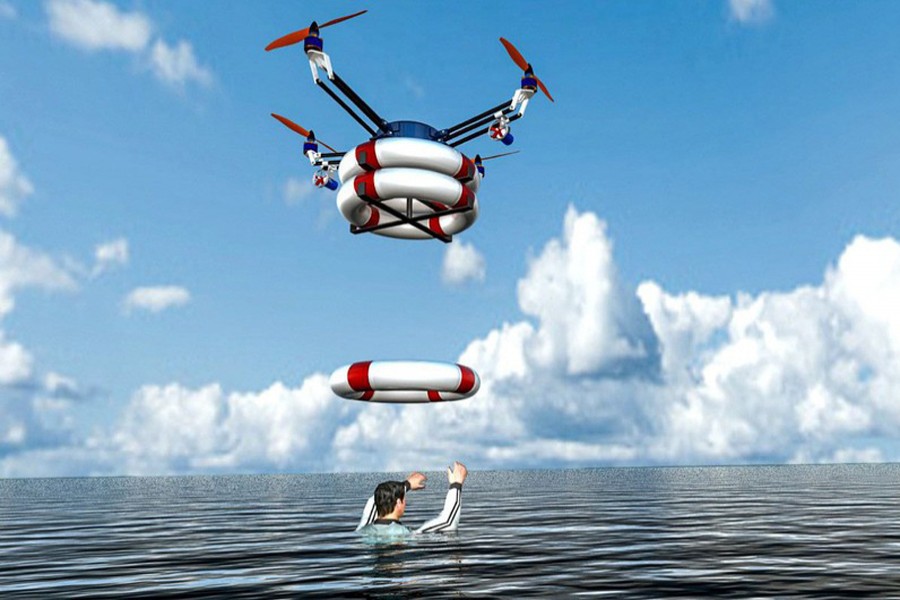Drones may be best known for taking impressive aerial videos and inspecting buildings, infrastructure and crops, but they also promise to improve mobile and internet connectivity for emergency services and consumers.
Poor mobile signal in rural areas is frustrating, in some cases it can be life-threatening in emergency situations. Slow emergency response times mean higher mortality rates.
Mobile signals are usually sent via base stations, attached to buildings or special masts. These are tough to put up in a hurry - so why not attach a base station to a drone?
For the last two years, the Finnish tech firm Nokia and British mobile operator EE have been flying small quadcopter drones mounted with portable mobile base stations in Scotland.
The idea is that in an emergency, a drone could hover over a disaster area to provide instant 4G mobile network coverage with a 50km (31 mile) radius.
But drones can't fly for very long before the battery runs out - 30 minutes is a typical maximum.
So US telecoms giant AT&T is developing a large, helicopter-like drone known as the "Flying COW", short for "Cell on Wings". It is tethered to the ground by a cable that gives it power.
This enables the drone stay in the air 24-hours-a-day at a maximum height of 168m (550ft).
AT&T says it used Flying COW to provide emergency 4G coverage to Puerto Rico in the aftermath of Hurricane Maria in November. Each drone was able to cover an area measuring 36 sq km.
Nokia wants to take things a step further, and turn police vans and fire engines into command and control centres to help emergency responders make crucial decisions much faster than they do today.
The idea is for fire engines to have their own personal 4G network with a 50km radius.
From the command centre, fire fighters would launch drones and use their cameras to survey the scene. The same concept is being used for search and rescue, with artificial intelligence linking the drones together into a "swarm", so only one pilot is needed to direct a whole group of drones.
Nokia is testing out the technology with Vodafone and firefighters in Dusseldorf, Germany.
"You don't need to send firemen into the hostile environment, you will have full situational awareness immediately," says Thorsten Robrecht, Nokia's vice president of advanced mobile networks solutions.
"What we see from the police is that this is much quicker and lower cost than a helicopter, which they still mostly use today."
British start-up Unmanned Life has developed software to send out multiple autonomous drones at the same time to gather information during a crisis, such as when a building is on fire.
One drone hovers in the air providing 4G coverage, while another flies around the building providing live video. A third equipped with heat sensors creates a heat map of the building, while a fourth uses sonar to map structural damage, reports BBC.
Unmanned Life is in talks to provide its system to BT and Verizon, who currently hold government contracts for emergency communication networks in the UK and US.
Swarms of co-operating drones, each with different tasks, help address the flight-time issue because single-function drones can be lighter.
And they can be lighter still if many of their computational and sensing functions - navigation for example - are undertaken by computers on the ground "talking" to the drones wirelessly.
The lighter the drone, the more it can carry.
In February, Ericsson tested this concept with BT and Verizon in London to show that a drone could autonomously carry 5kg of medical supplies from one location to another, without human intervention.


